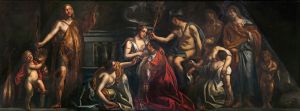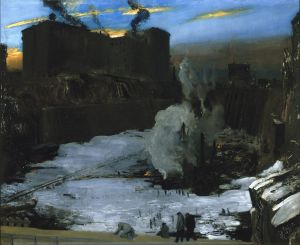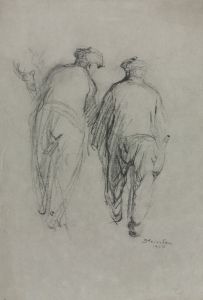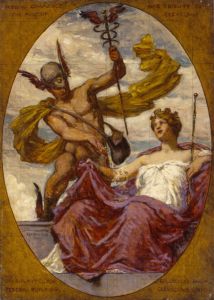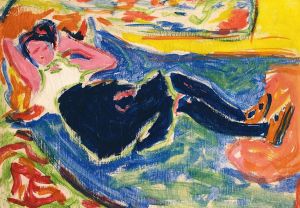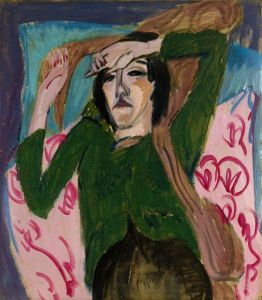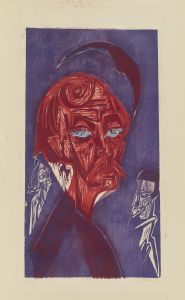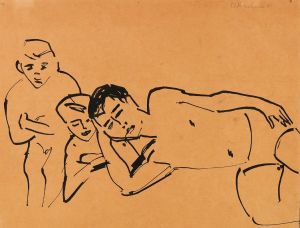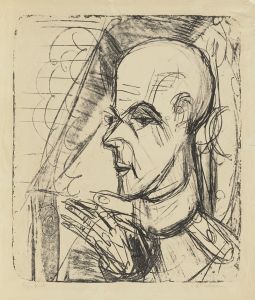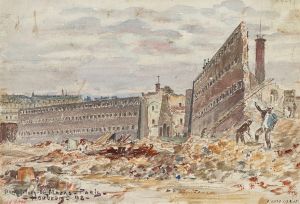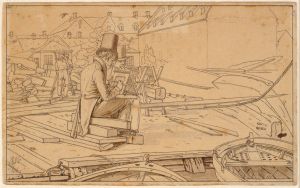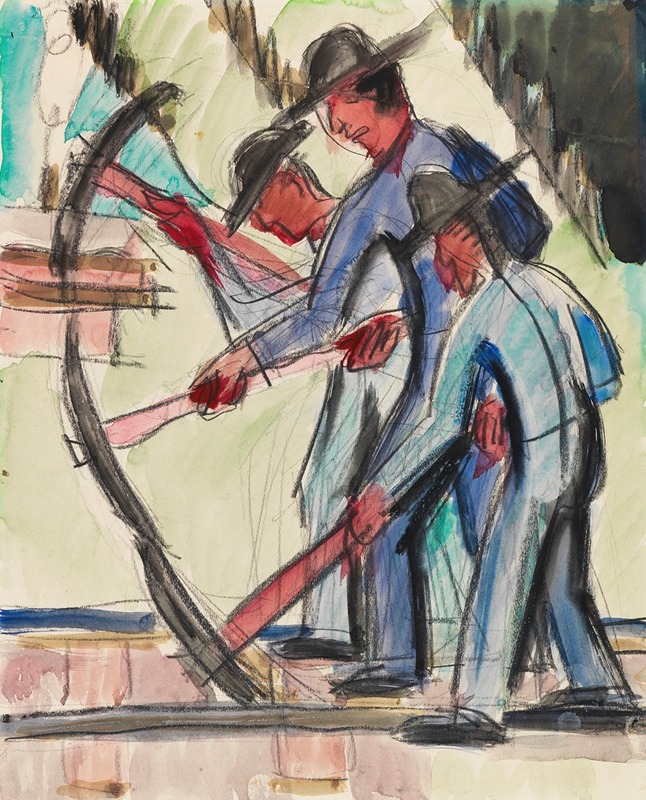
Gleisarbeiter
A hand-painted replica of Ernst Ludwig Kirchner’s masterpiece Gleisarbeiter, meticulously crafted by professional artists to capture the true essence of the original. Each piece is created with museum-quality canvas and rare mineral pigments, carefully painted by experienced artists with delicate brushstrokes and rich, layered colors to perfectly recreate the texture of the original artwork. Unlike machine-printed reproductions, this hand-painted version brings the painting to life, infused with the artist’s emotions and skill in every stroke. Whether for personal collection or home decoration, it instantly elevates the artistic atmosphere of any space.
Ernst Ludwig Kirchner was a German expressionist painter and one of the founding members of the artists group Die Brücke (The Bridge), which played a pivotal role in the development of modern art in the early 20th century. One of his notable works is "Gleisarbeiter" (Railway Workers), created in 1914.
"Gleisarbeiter" is a compelling example of Kirchner's expressionist style, characterized by bold colors, dynamic compositions, and a focus on the human figure. The painting depicts a group of railway workers engaged in their labor, capturing the intensity and physicality of their work. Kirchner's use of exaggerated forms and vibrant colors conveys a sense of movement and energy, reflecting the industrial environment and the strenuous nature of the workers' tasks.
The painting is significant not only for its artistic qualities but also for its historical context. Created during a period of rapid industrialization and urbanization in Germany, "Gleisarbeiter" reflects the changing landscape of the early 20th century. The depiction of laborers highlights Kirchner's interest in the lives of ordinary people and his desire to portray the realities of modern life.
Kirchner's work often explored themes of alienation and the human condition, and "Gleisarbeiter" is no exception. The figures in the painting are rendered with a sense of urgency and tension, suggesting the pressures and challenges faced by the working class. This focus on the human experience is a hallmark of Kirchner's expressionist approach, which sought to convey emotional and psychological depth through visual means.
The painting also demonstrates Kirchner's innovative use of color and form. The bold, non-naturalistic colors and the angular, almost abstract shapes of the figures are typical of his style, which aimed to break away from traditional artistic conventions and create a new, more expressive visual language. This approach was influenced by various sources, including African and Oceanic art, which Kirchner and his contemporaries admired for its perceived authenticity and emotional power.
"Gleisarbeiter" is housed in the Kunstmuseum Basel in Switzerland, which holds a significant collection of Kirchner's works. The museum's collection provides valuable insights into the artist's development and his contributions to the expressionist movement.
Ernst Ludwig Kirchner's career was marked by both critical acclaim and personal struggles. He served in World War I, an experience that had a profound impact on his mental health and artistic output. Despite these challenges, Kirchner continued to produce influential works until his death in 1938. His legacy endures through his contributions to modern art and his influence on subsequent generations of artists.
In summary, "Gleisarbeiter" by Ernst Ludwig Kirchner is a powerful expressionist painting that captures the essence of early 20th-century industrial life. Through its dynamic composition, bold colors, and focus on the human figure, the painting reflects Kirchner's innovative approach to art and his commitment to portraying the realities of modern existence.





